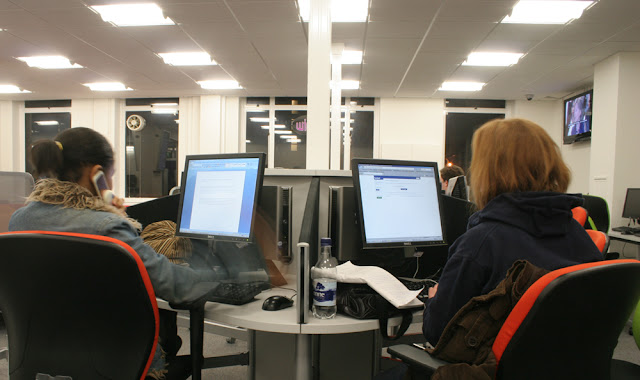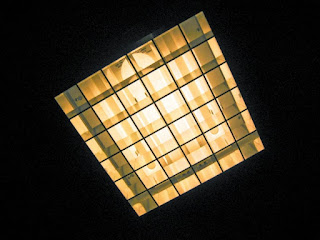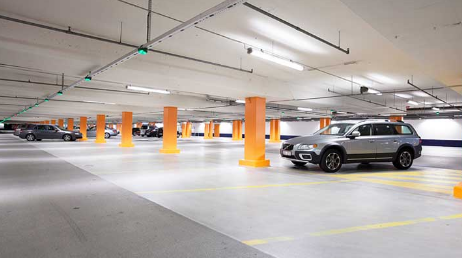CAT | LED

Innovative retailer Ikea is setting its sights on the smart lighting market.
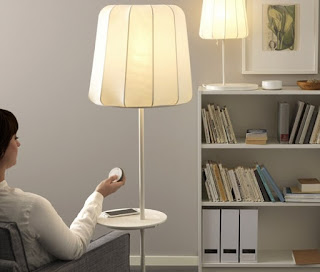
Ikea’s plug and play solution features a tiny transmitter that has been installed within the luminaire, which can communicate with a remote control.
ikea · ikea led · intelligent lighting · led lighting · Novel Energy Lighting · remote control lighting · TRÅDFRI LED
26
Meet ‘Alexa’ Amazon’s new device that can control your home lighting
Comments off · Posted by admin in LED
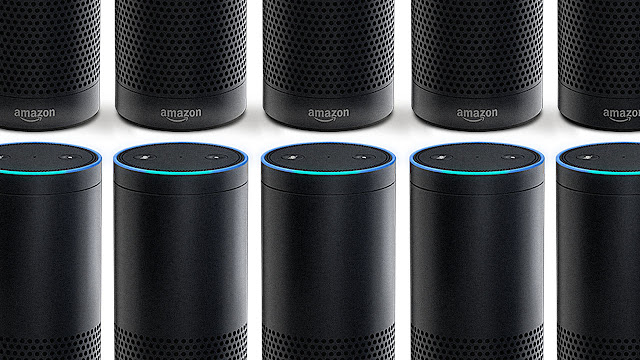 |
The Echo is a smart-speaker that responds to the name ‘Alexa’. |
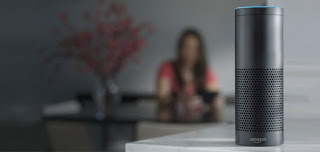 |
| Philips Hue will also be compatible with the Echo, meaning you will be able to adjust the strength of your light fixtures using your own voice. |
The Amazon Echo will feature a voice control capability that will allow you to turn off your lights and adjust your central heating with the sound of your voice. The Echo is a smart-speaker that responds to the name ‘Alexa’.
Amazon has announced a partnership with Hive, the smart-home platform developed by British Gas. The Echo will be compatible with Hive Lights and and Hive Active Heating.
Philips Hue will also be compatible with the Echo, meaning you will be able to adjust the strength of your light fixtures using your own voice.
As well as the Echo, Amazon are also launching the cheaper second generation Echo Dot mini-speaker, which features an even more nimble ‘Alexa’, which can trigger pre-set home lighting scenes. This means that you will also be able to voice-activate colour changing as well as dimming your lighting.
So, if you have created a sunny lighting scene in your bedroom that involves orange and red hues that adjusts in brightness as the sun sets, you could activate this by simply saying, ‘Alexa, turn on scene sunny day’ and she will happily oblige, (that is if you want to ascribe a sex to a gadget designed by a multi-billion dollar corporation out to get you to spend more money.)
You will not be able to ask ‘Alexa’ to change the colour of individual light sources if you are using the Hue, but you will be in with a chance if you own Hue’s competitor Lifx, which is compatible with Amazon’s speaker.
Hue is able to communicate with ‘Alexa’s’ arch-enemy ‘Siri’ though to change the colour of individual light sources.
The Amazon Echo will be available to buy from the 16th of September 2016.
amazon alexa · amazon echo · home lighting control · light scene control · Novel Energy Lighting · remote control lighting

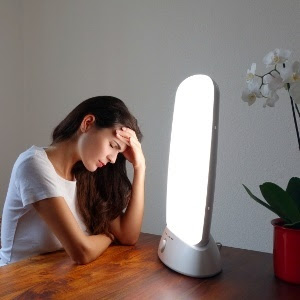
A new study has found that exposure to bright light can restore the sinking sexual desires of men during the cold winter months.
Scientists from the University of Siena in Italy have discovered that sitting in front of a light box can increase testosterone levels, boosting sexual satisfaction in the process.
The study was comprised of 38 men who had complained of spiraling sexual desire. Half of the group were treated with a light box, while a secondary group were exposed to an adapted light box that was wired to produce significantly less light.
The participants received doses of light for an hour, during the early morning, for two weeks straight.
The scientists discovered when the study was complete that the men exposed to the bright, unregulated light, recorded a tripling in sexual satisfaction, while the men who sat in front of the
‘In the northern hemisphere, the body’s testosterone production naturally declines from November until April and then rises steadily through the spring and summer with a peak in October.’
adapted light found that their libido remained significantly depressed.
When the results were more carefully considered it was found that the men who reported better sex had significantly higher levels of testosterone.
‘In the northern hemisphere, the body’s testosterone production naturally declines from November until April and then rises steadily through the spring and summer with a peak in October,’ Prof Andrea Fagiolini, who led the study commented.
This fact is mirrored in spikes in the birth rate, as June often records the highest rates of conception.
The libido-restoring light box contained bright fluorescent tubes that emitted light at ten times the intensity of the the light emitted by household fixtures.
Light boxes are also used to treat Seasonal Affective Disorder (SAD), which is a depression that strikes during the winter months when the hours of available daylight are at their lowest.
The scientists believe that the light box exposure inhibits the pineal gland in the centre of the brain, which prompted the noted increase in testosterone production.
Testosterone injections, antidepressants, and other medications can be used to treat a collapse in sexual desire, but the use of light would have none of the side effects associated with these options. The results will be presented at the European College of Neuropsychopharmacology (ECNP) Congress in Vienna later in the year.
Perk your living space up with new lights! Visit www.novelenergylighting.com today to explore our range of top quality LED lighting
led lighting · libido lighting · light box · Novel Energy Lighting · philips led · pineal gland
Scientists use pulses of light to end heart attacks. PLUS: Verizon eyes city revolution with LED purchase. AND: Meet ‘Alexa’….Amazon’s new device that can control your home lighting. Lux Today September 20th 2016.
amazon alexa · home lighting control · led lighting · novel enegy lighting · sensity · verizon led

George Washington crossing the Delaware River during the American Revolution. Don’t be lulled into inaction like the British in Boston Harbour in 1773….IoT will be the next revolution in the lighting industry and you need to be prepared.
Gordon Routledge of Revo reports: The next revolution in lighting has arrived in the form of IoT (Internet of Things) and it’s going to change everything.
Ironically, I used to get exactly the same response when I spoke about LEDs some 15 years ago. Change takes time as Bill Gates once said:

I tend to be an early adopter of technology but sometimes I fail to spot the trend. I could not, at first, for example, understand YouTube. Why would you want to make your own video and share it on the Internet? Why would you want to watch that video on a tiny screen on a mobile phone, while sitting on a bus? Yet 11 years on Lux has its own YouTube channel, which has clocked up over 1.4 million views. This is, of course, quite pathetic, when placed in comparison with the multi-millions of views that funny cat videos attract.
The birth of YouTube came well before smartphones and high speed mobile connectivity, it needed some other megatrends to develop for it to rise to its full potential
Now, let’s get one thing clear, the term ‘smart’ is not a replacement for dimmable. Just because you can dim your lights with a smart phone does not mean that you are at the forefront of the IoT revolution. Instead IoT hides in various overused and sometimes difficult to understand terms, Connected Lighting, Smart Cities, LiFi and PoE, being just a few. These are the trends that are helping IoT to take off.
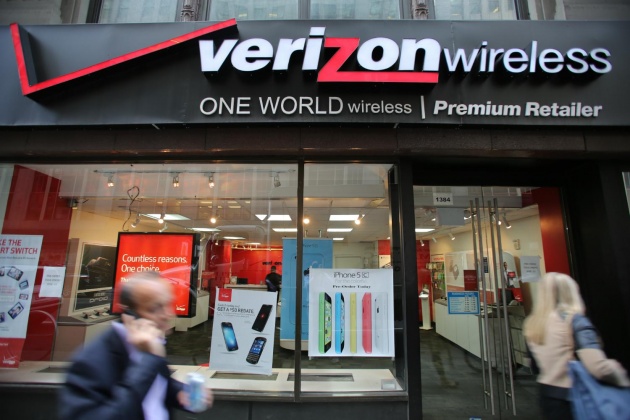
Verizon, the American communications company have bought Sensity in order to widen their IoT offering.
So why has the world changed this week? For starters Verizon, one of the world’s largest mobile phone operators, purchased Sensity Systems. Hugh Martin the CEO spoke at one of our conferences two years ago, his vision was simple, all lights are going to be replaced with LED over the next ten years, so, he said, when we do the conversion let’s pack them full of sensors, cameras and wireless networking devices and use the network to build new business apps.
It was jaw dropping for our audience at the time, but Hugh was right on the money. While Sensity’s gun shot detection app may not find a ready use in Europe, Verizon clearly see value in some of their products that they can offer to their millions of subscribers, leveraging the data collected by millions of lighting points.
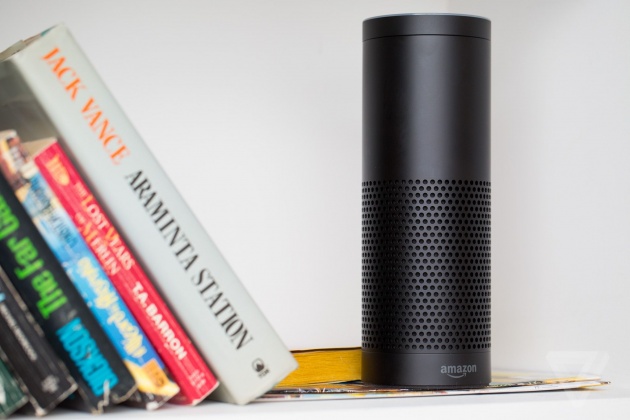
The Amazon Echo, which allows users to switch on their lights with the sound of their own voice.
Next up, Amazon. The multi-billion-dollar corporation has added the ability to control lighting to its Alexa digital assistant. If you haven’t had cause to buy one yet, Alexa is part of the Amazon Echo, which is a smart speaker that is able to respond to voice commands.
For years we have talked about the death of the light switch and the reason given to prevent this is that people don’t want to reach for a smart phone in the middle of the night to turn the lights on, even though your smart phone is surely going to be closer to your bed than the nearest light switch.
The giving of verbal instructions could well be the true intuitive lighting control, but it won’t work for me, as my wife says I have a habit of talking in my sleep, and lighting is frequently the subject.

The Yellow Dot program allows manufacturers to develop LEDs that work with Philips’ indoor positioning technology.
Of course, Amazon won’t be making lights, although they do have their own brand, Amazon Essentials, so rule nothing out when it comes to anticipating the next move of this cunning company.
Amazon currently relies upon other manufacturers to make devices compatible with Alexa, such as LiFx smart lamps. If I made residential lighting controls I would be very concerned about this move. Lighting control is moving from the cupboard to being in the lamp, and the user interface is migrating from the wall plate to an Amazon owned device.
Finally, Philips has open sourced their light based indoor location system, which is perhaps a canny move for the future. Many smaller OEM’s can’t play in the IoT space and clients and designers will not want to be held to ransom in order to buy Philips fixtures to implement a system.
It also gets Philips away from the dirty business of having to sell rapidly commoditising fixtures. Instead they simply collect data from lighting and sell it on to the end user. Thus data starts to replace lamps as a continuous revenue stream.
These are, of course, just announcements from the last week. But if you throw into the mix Cisco and Acuity Brands buying tech companies with gusto and huge, but lesser known, companies such as Delta Electronics who snapped up Loytec Electronics earlier in the year, you start to realise that the stage is being set for a revolution.
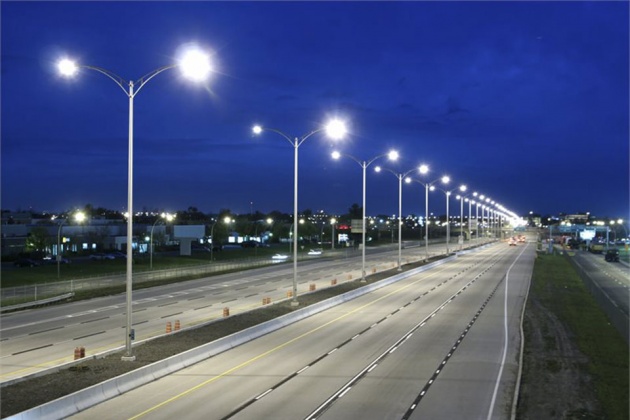
Big technology companies want to use the installation of LEDs to harvest as much data as they can.
It’s becoming clear that big technology companies want to be active on the lighting scene. They don’t want to join in our fun debates about standards, colour quality, lamp bases, glare and flicker though. All they want to do is gain access to the billions of lighting fixtures in the word and harvest the data they collect, enabling new business models to be built that don’t exist today.
You may not believe me, and I’m sure you can find hundreds of reasons as to why it just will not happen…but, read my lips, in ten years time IoT will be on everyone’s mind.
intelligent connected lighting · internet connected lighting · internet of things · iot · lux · Novel Energy Lighting
Smart traffic lights to ‘communicate’ with drivers to inform them when they are about to change. PLUS: Saudi scientists create ‘fastest li-fi luminaire’. AND: New building standard aims to protect the health of occupants.
intelligent cities · led lighting · led street lights · lifi · lifi traffic lights · Novel Energy Lighting · smart street lights · smart traffic lighting
A THIRD of Britain’s office workers hate their lighting, a study by the respected pollsters Ipsos has discovered.
Some 32 per cent of white-collar employees told the researchers that they were unhappy with the light intensity, with only a fifth were able to alter the light level.
The results are sure to bolster critics of the lit environment in the nation’s commercial workplaces, who have slammed the sector for a lack of creativity. Top lighting designer Paul Nulty, founder of Nulty+, tweeted: ‘Bad lighting effects workplace productivity. Who’d have thought!?’
UK offices still have a preponderance of so-called Category 2 lights – recessed, deeply-louvred fittings designed to minimise reflections on computer screens – which deliver a gloomy environment.
The study of over 12,000 workers across 17 countries showed that the UK workers are the least satisfied with their office ambience. The study appeared to add weight to the argument that local lighting control boosts employee engagement and satisfaction, as the biggest issue was a lack of control. Only 39 per cent of respondents say they can adjust the temperature, while a mere 21 per cent can alter the lighting.
The so-called Category 2 light fixture has long dominated the UK’s offices, but its deep louvres are no longer necessary to prevent reflections on computer screens. Picture: Andrew Malone
‘This could be seriously affecting the concentration, productivity and engagement levels of workers, with the study showing that a lack of flexibility and control over the physical work environment correlates with a lack of engagement’, the study said. In contrast, highly engaged employees are those that have the most flexibility over how and where they work.
The situation in the UK is likely to be influenced by the country’s dominance of open-plan design, with 49 per cent of workers based in this kind of space due to its cost-saving benefits. However, this can limit employees’ individual control over their environment.
Christine Congdon, director of Global Research Communication told Lux: ‘Our research has consistently shown that the most engaged workers are those who have autonomy over how and where they work, whether adjusting the temperature, lighting, or workspace to suit their needs. ‘When people feel like they have choice and control over various aspects of their physical work environment, it leads to greater satisfaction overall.
‘Everybody is different and personal preference will depend on an individual’s natural physiology, their mood on a particular day and the task they are working on. To cater to these constantly changing needs, employers should pay more attention to providing a range of working environments, including the ability to adjust workspace basics as required.’
The study was commissioned by office furniture manufacturer Steelcase.
Visit us at www.novelenergylighting.com to explore our range of office lighting products, including LED panels and LED tubes. Call us to discuss your needs: 0208-540-8287, or drop us an email: sales@novelenergylighting.com
Main picture copyright Ripton Scott 2016
commercial lighting · led panels · led tubes · Novel Energy Lighting · office compliant lighting · office led · office lighting · productivity lighting
19
Car Park LED Lighting Solutions – Philips PacificLED GreenParking
Comments off · Posted by admin in LED, Philips LED
Smart, energy efficient lighting at Globen parking garage with the PacificLED GreenParking system.
Sustainable lighting
The three-floor, 9,000 square meter garage has 1,500 parking places. The original existing lighting installation was divided into 4 zones per floor, each lit with traditional batten luminaires, each housing a 1 x 58W T8 fluorescent tube. When a car entered the garage, the lighting operated at 100% of its full output for two hours, before switching off completely. The lighting quality was poor, and the luminaires were starting to fall apart. When it came to the renovation, Klövern AB didn’t just want to replace the fluorescent lamps with LED lamps. The company wanted something more sustainable. “We’re highly committed to sustainability, so it was very important that we installed a ‘future-proof’ lighting system,” explains Lennard Lindkvist, Energy Manager at Klövern AB.
“We wanted a lighting installation that would produce bright, well-distributed white light, so the garage felt safe and secure for our customers. But at the same time, we wanted a smart, energy-saving system that would help reduce our operating expenses.”
Avoiding cabling costs
Klövern AB wanted to avoid the cost of replacing the cabling, meaning that the new LED luminaires had to be the same length as the existing fluorescent lamp luminaires. “After exploring various options on the market, we decided that the GreenParking system from Philips, which couples Pacific LED waterproof luminaires with wireless control, was the best long-term solution from a sustainability perspective,” continues Lindkvist. “We replaced the luminaires and kept the cabling, which saved significant labor and material costs.”
The complete GreenParking package
GreenParking is an easy-to-install, full lighting system: PacificLED luminaires paired with wireless movement detectors create a complete and controllable wireless lighting system, which enables the luminaires to communicate with each other and behave according to how they are programmed. “For the new lighting installation, the parking garage was divided into 13 zones per floor and more than 120 wireless movement detection sensors were mounted in strategic locations” says Lindkvist. “Unlike with our previous system, we’re only paying for lighting when it’s needed. When a car or pedestrian enters the programmed ‘zone’, the lighting comes on to 90% of its full power. When the car or pedestrian leaves the area, the output drops to 10% after 2 minutes”. “The LED lighting produces a crisp white light – essential for customers to feel safe and secure. And because Pacific LED luminaires are IP65 class rated, we know the luminaires are tough enough to withstand the exhaust gases.”
Halving energy costs
For Klövern AB, it was crucial that the new lighting system saved energy and cut operating costs: “Energy consumption is a major business expense for us – but also one we can address by investing in new technology. With every penny we save on energy, the property becomes more profitable”. “We’ve cut energy consumption by more than 50%. The LED luminaires account for 75% of the energy savings, the lighting controls 25%. “We’ve saved 350,000 kWh per year by switching to the Philips GreenParking system. In fact, we save as much energy as 17 houses consume every year.” The long life span of the LED luminaires means Klövern AB will also reduce its maintenance costs: “With the old system, we had to replace the fluorescent lamps every other year. The new LED modules won’t need replacing for 15 years. This not only saves time and money – it makes us a more environmentally friendly company as well.”
Contact us at www.novelenergylighting.com, T: 0208-540-8287, E: sales@novelenergylighting.com to discuss LED retrofit options for your car parking or outdoor lighting facilities.
car park lighting · led lighting · Novel Energy Lighting · philips car park lighting · philips greenparking · philips led · philips pacific · philips pacificled
New technology gives diners ability to choose a lighting mood to suit their meal. PLUS: Light pollution robs Americans of a night sky view. AND: LED used to battle elephants in India. Lux Today August 2nd 2016.
hospitality led · hospitality lighting · led lighting · light pollution · mood lighting · Novel Energy Lighting · restaurant lighting
8
Two-minute explainer: Lighting for the partially sighted
Comments off · Posted by admin in LED
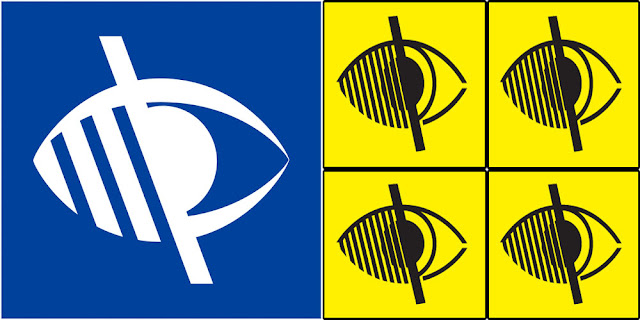 |
| Lighting can do a lot to assist partially sighted people. |
The Equality Act 2010 is intended to protect partially sighted people from unfair treatment in employment and when accessing public services. But what more can be done with light to make life a little more equable for those with disabilities? In particular, how can light be best utilised to benefit partially sighted people?
Colour Contrast
- Use colour to highlight differences between objects and surfaces, making it easier to negotiate a complex space. For example, in a white-tiled bathroom have the bathroom furniture in a different colour.
- Use different colours to highlight circulation routes from functional space (retail spaces, open-plan offices etc).
- Paint door frames a different colour to the doors and walls.
- Consider a different colour for door handles.
- Ensure that railings on stairs are a different colour to the walls, likewise the banisters.
- It is important to be able to pick out the edge of steps so use a contrasting strip or nosing.
- Glass doors and windows need to be visible, so consider the use of brightly coloured designs where vertical glazing is accessible to passers-by.
Lighting
- Increase light levels in areas such as stairs and level changes in areas like the kitchen and the bathrooms. There may be an aesthetic challenge in achieving this, but new low-energy LED sources can deliver high light levels from relatively small fixtures.
- Introduce additional light fixtures in areas where spatial definition is important.
- Make sure that light is in the places where it needs to be. Use the efficiency of localised lighting to assist in visual tasks, especially in places like kitchens and at work stations.
- Make the best use of natural light, but be aware of the potential problems that an over-bright blind can cause by ‘bleaching’ the rest of the surroundings.
- Make sure that any exterior lighting acts as a ‘way-marker’ as well as providing illumination. A line of light points can be more helpful than an illuminated pathway.
- Use light as a defining element in areas of the building where there are objects or furniture that protrude into circulation routes.
- Consider the impact of emergency lighting should the normal electrical supply fail. Escape lighting should assist in finding the route to safety for everyone.
The Equality Act 2010 requires employers to provide individual lighting provision to any employee requiring it.
Anyone registered as blind or partially-sighted automatically meets the Equality Act’s definition of a disabled person. Anyone with a sight loss that has a ‘substantial and long-term effect on your ability to carry out normal day-to-day activities’ may qualify for registration. In these circumstances, the requirements of the Equality Act 2010 must be met.
Credit: John Bullock, Lux
equality act 2010 · led lighting · led panels · lighting for partially sighted · Novel Energy Lighting · office lighting · partially sighted

